If you are Growing Potatoes Indoors, you’ll be getting fresh supply year-round! Interested in growing them perfectly? Read ahead!
Potatoes (Solanum Tuberosum) might be the only vegetable that tastes great with any cuisine. Baked or cooked, they offer a plethora of health benefits in many ways, with essential nutrients that help in combating many diseases. Above all, Growing Potatoes Indoors is easy, and this way, you can have them fresh anytime in your kitchen!
Here’s everything you need to know about growing Potatoes in containers!
Types of Potatoes
There are approximately more than 200 varieties of potatoes present in the United States alone! Each of the varieties comes under seven types of spuds. Also, potatoes come in three main categories-Starchy, Waxy, and All-purpose (that comes in-between waxy and starchy). Their seven types are:
1. Russet
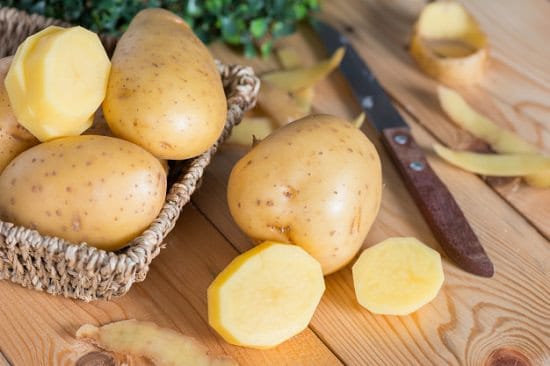
Also known as Idaho, it is a starchy potato, perfect for baking and frying. Further, this variety is large, with thick brown skin and white, powdery flesh.
2. Fingerling

Fingerling gets its name due to a finger-like appearance. It is cholesterol-free and also a good source of vitamin B6, fat, and sodium.
3. Petite Potato
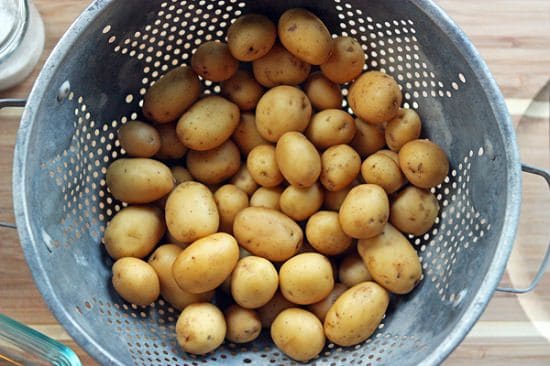
It is a small size spud, sizing up to 5-6 ounces. Petite potato is also cholesterol-free and contains more potassium and vitamin C than a banana!
4. Red Potato

You can easily grow red potatoes in your garden. They bear red skin with pink flesh that sometimes holds white swirls. Also, they are ideal for sauteing and boiling.
5. White Potato
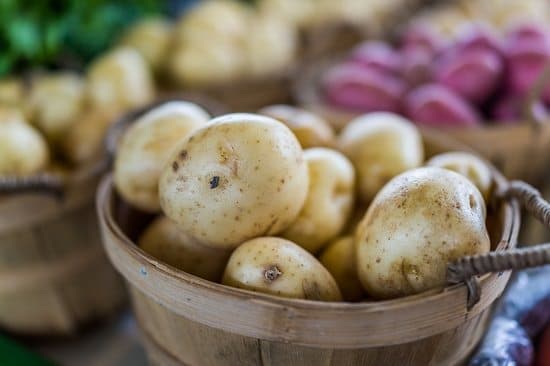
They have a light, thin, and smooth skin, with white flesh. These spuds come in the category of all-purpose potatoes.
6. Purple/Blue Potatoes
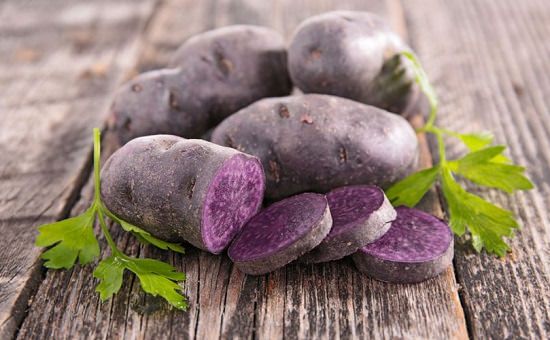
Purple/blue potatoes are easy to grow in the gardens. Their skin is dark purple/blue, having a light blue flesh. They are powdery or mealy in texture and best for baking.
Check out our article on potatoes planting ideas here!
Planting Seed Potatoes

When you grow a potato from potato, the process is called ‘Seed Potato.’ You can either get a potato from a garden center or pick one from your kitchen basket.
How to Grow Potatoes Indoors
Growing potatoes indoors is easy and requires little preparation!
1. Selection of Pot
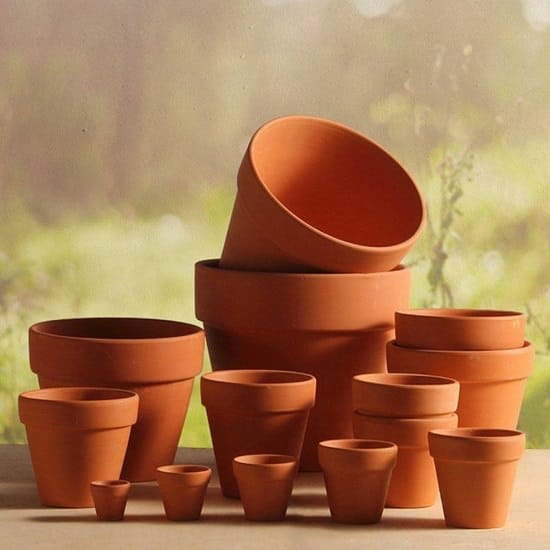
Select terracotta or plastic pot, 15-20 inches wide and 20-25 inches deep, preferably of dark shade as it maintains the warmth, and helps in maintaining the moisture. You can also use a large plastic bucket with drainage holes.
Potatoes can also be planted in growing bags and even in polyethylene bags, dustbins, sacks, and tires. Do ensure that they have bottom holes to drain excess water.
2. Planting Potato
Plant the seed potato on top of the soil with the eye buds facing the upward direction. Cover the tuber (seed potato) with 4-5 inches of soil. If you have taken a 12-15 inches wide pot, then don’t plant more than 3 tubers.
Requirements for Growing Potatoes Indoors

Position
Strategically place the pot where it receives a minimum of four to five hours of sunlight a day. This will be enough for the fine growth of the plant. Putting them near a door or a window would be a great idea. Also, if you have a balcony, that’d be a great place to keep the plants there.
Soil
Use a light, grainy, and organic-rich potting soil. Avoid using wet and clayey soil. Acidic soil with pH 5-6 does well for growing potatoes.
Watering
Regular watering is essential for growing potatoes indoors, as they cannot resist droughts and infrequent watering. Try to maintain the moisture of soil while avoiding overwatering. The trick is to water the pot until it seeps out of the bottom holes.
Temperature
Though it is a cool-season crop, it requires a frost-free period of around 75-135 days or more, depending on the potato type or variety you are growing. A temperature range of 45-80 F (7-26 C) is optimum for growing these plants.
How to Care for a Potato Plant Indoors

Fertilizer
Natural fertilizers like well-rotted manure or compost are going to be more than enough while growing potatoes indoors. You can also go for organic liquid fertilizer once a month. Most importantly, avoid using a high nitrogen fertilizer.
Pest and Diseases
Potato beetles, flea beetles, and aphids may disturb the growth of your plant. You can get rid of them by using organic fertilizers. Also, keep the leaves dry while watering and avoid waterlogged soil. It will prevent the infestation of pests, maintaining a disease-free growth.
Harvesting and Storage
When blooms start to appear, and leaves turn yellow, its time to harvest your fresh and organic potatoes!
For storing, start by brushing off the dirt. Let them dry in a cool place for 4-5 days and then keep them in baskets or paper bags as they let air pass, allowing potatoes to breathe.


